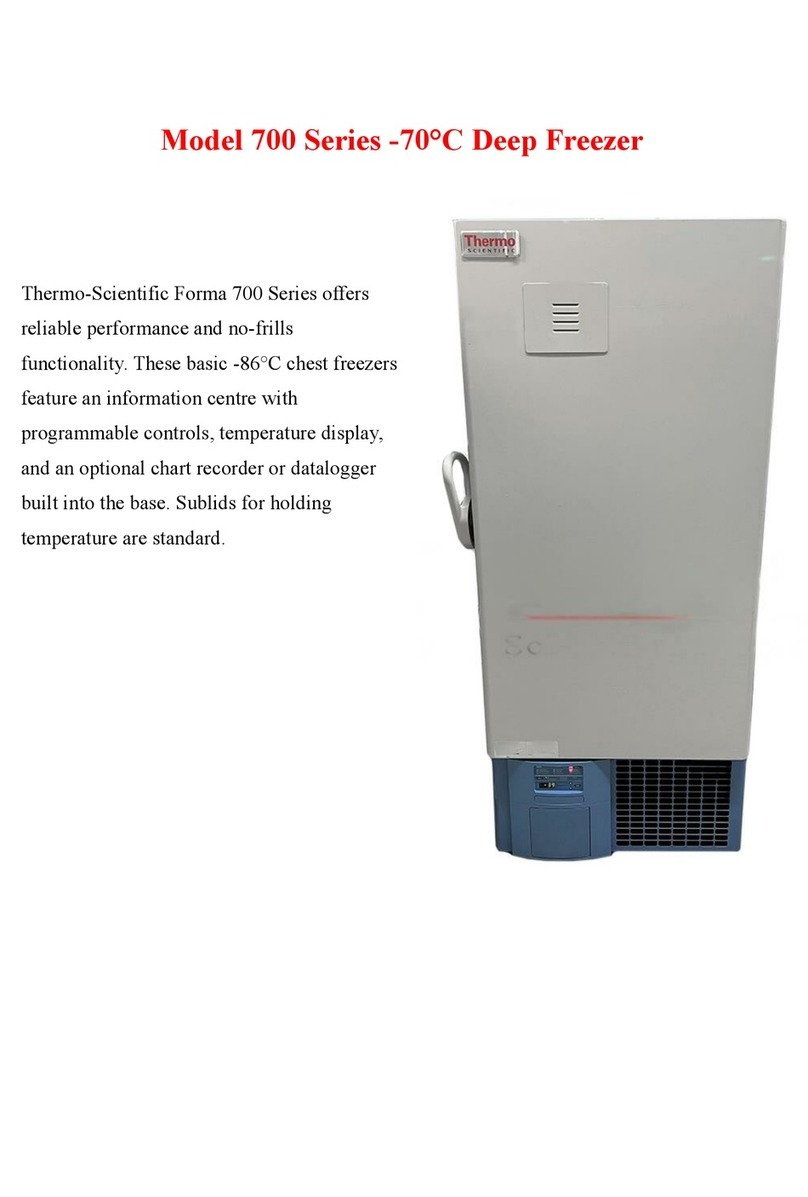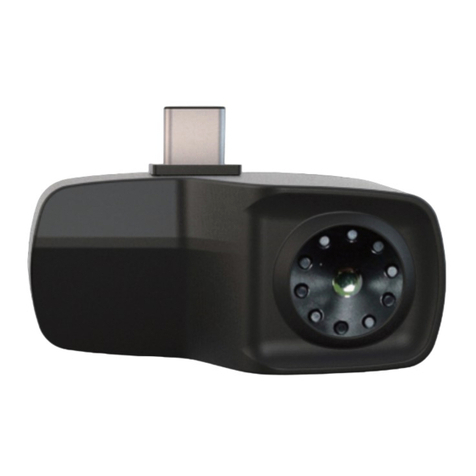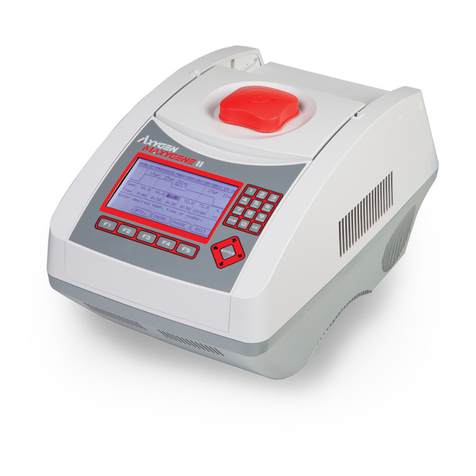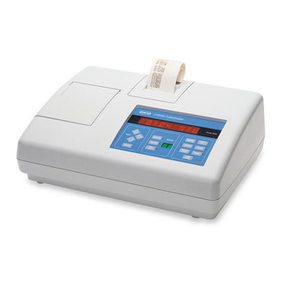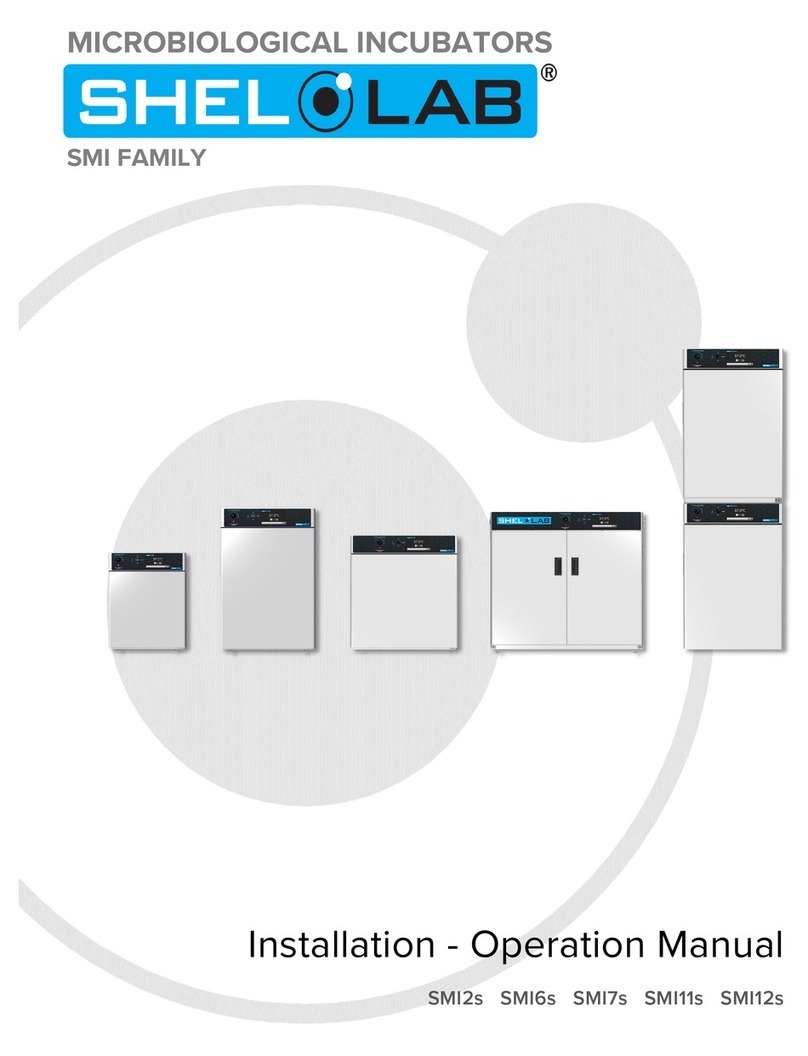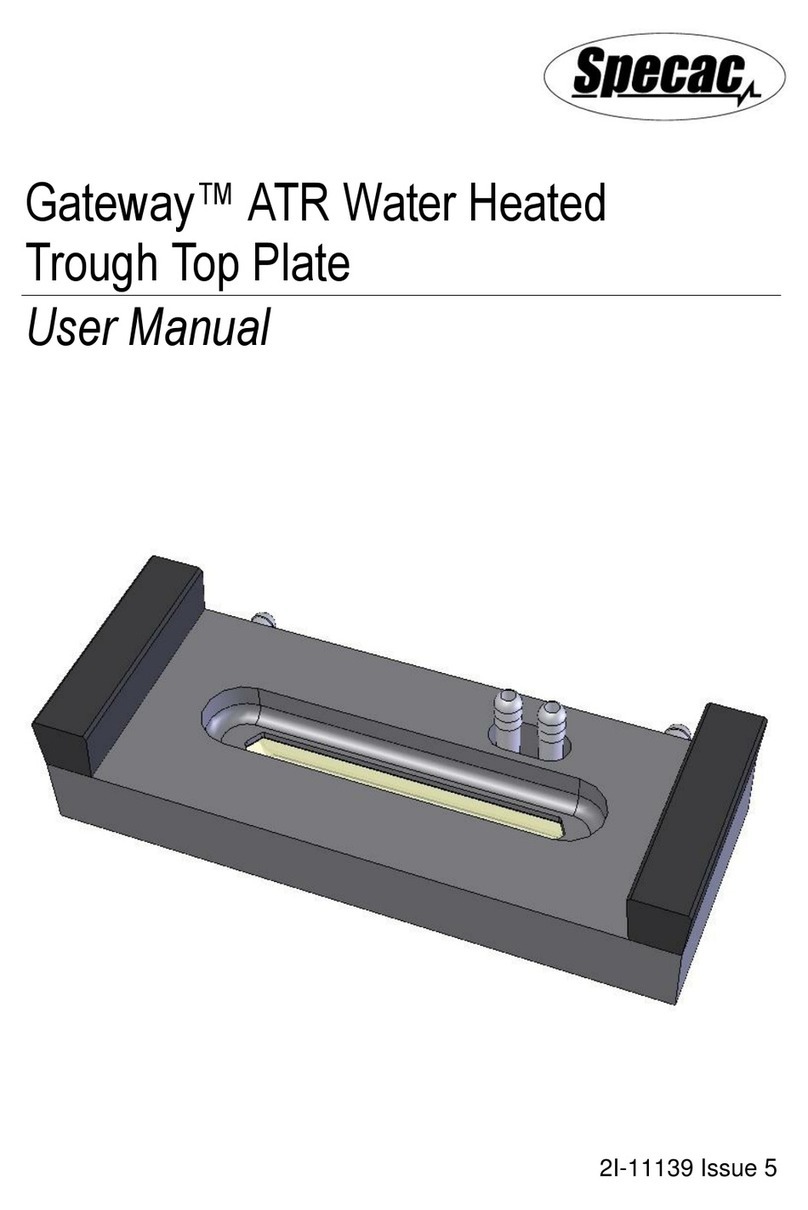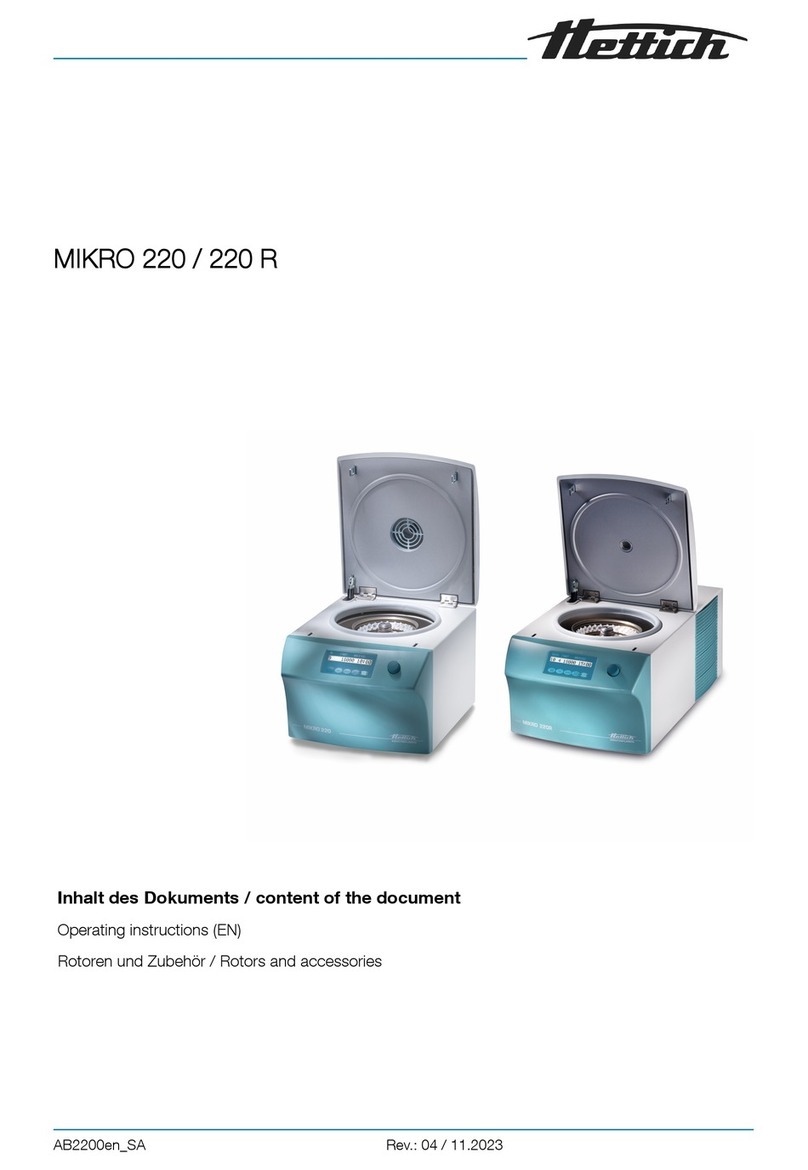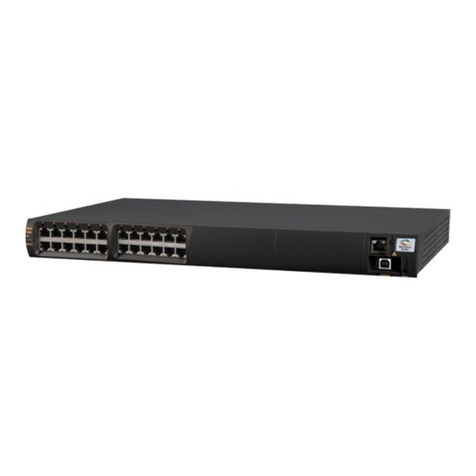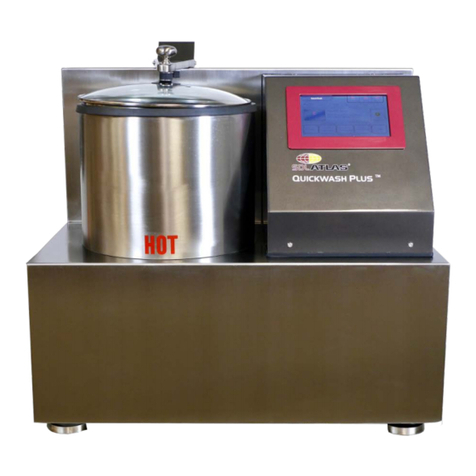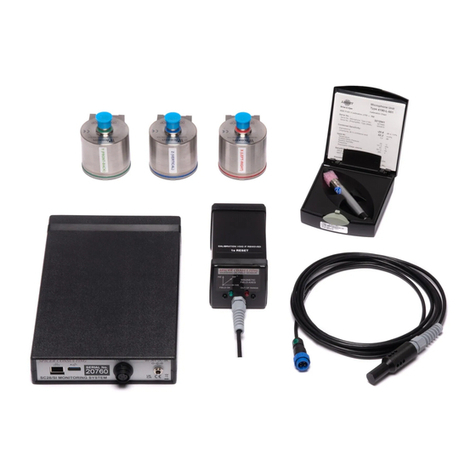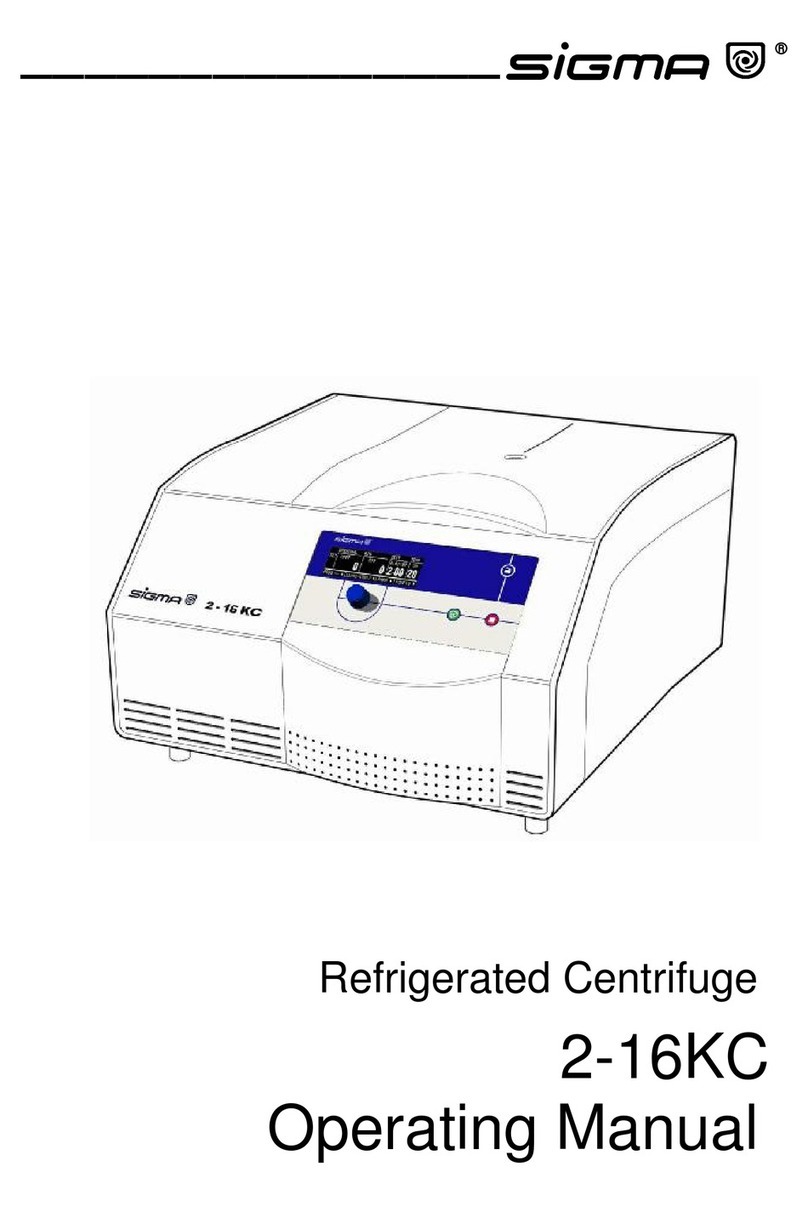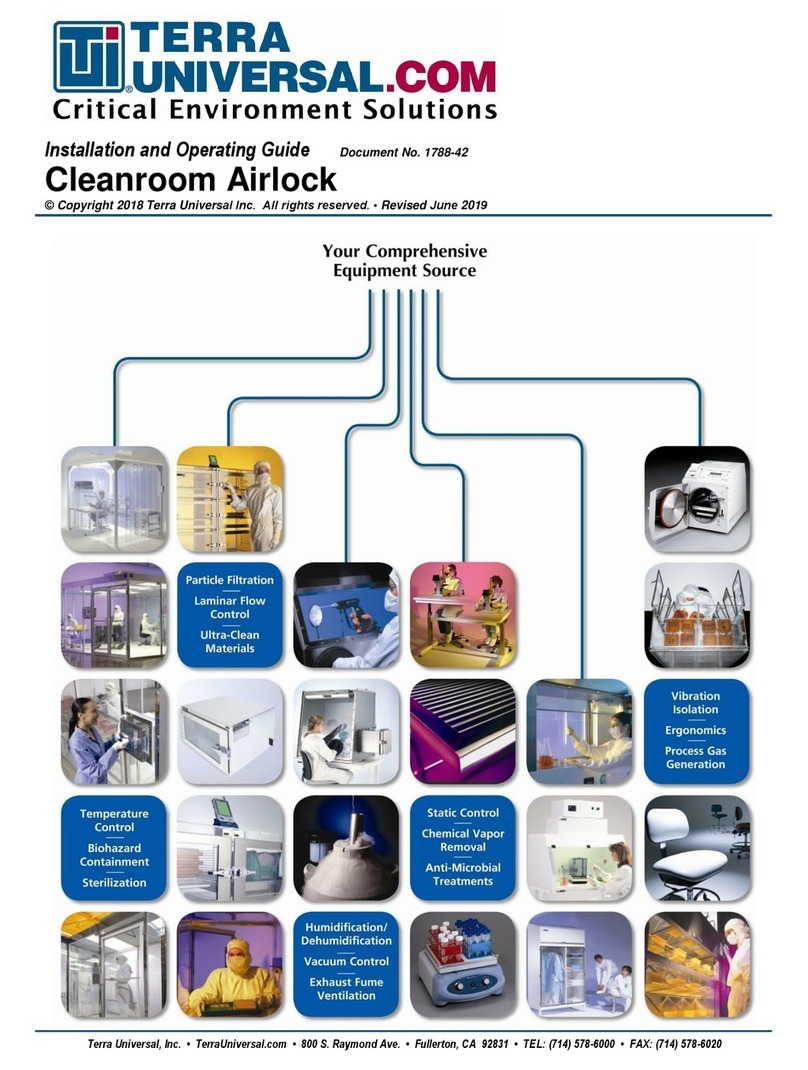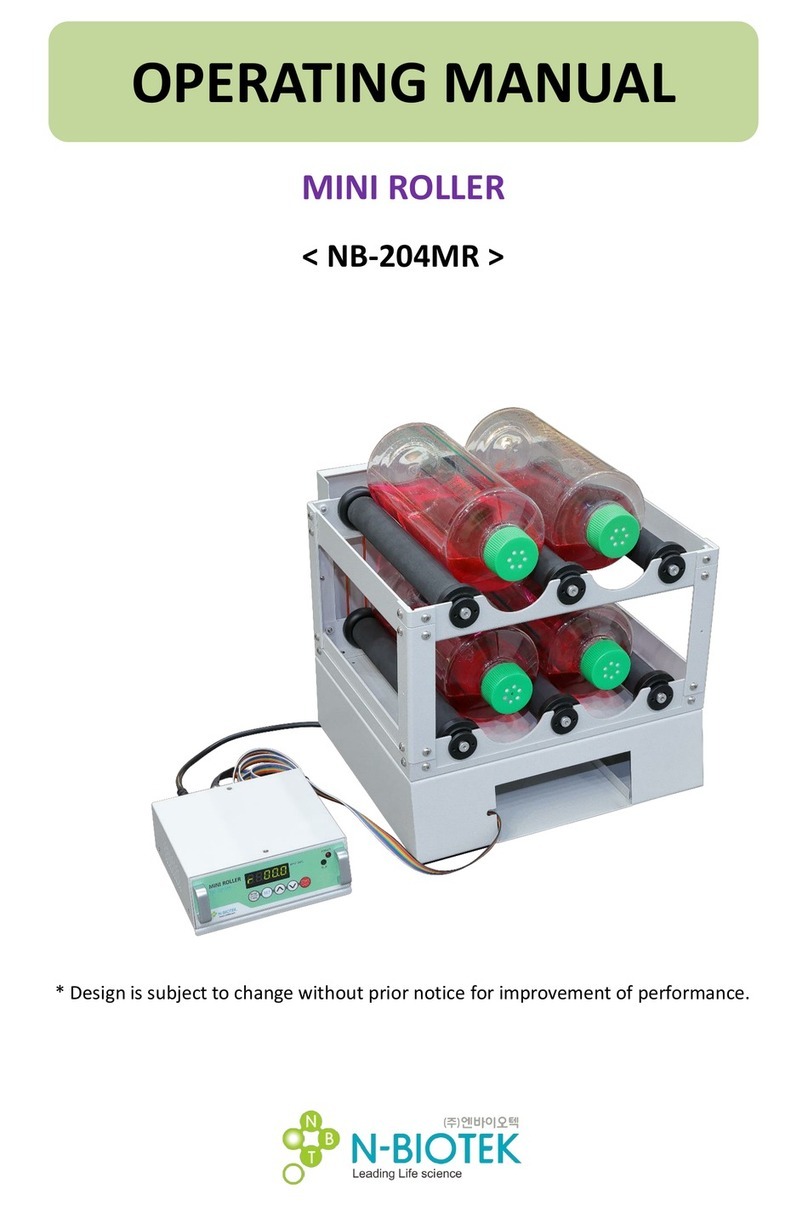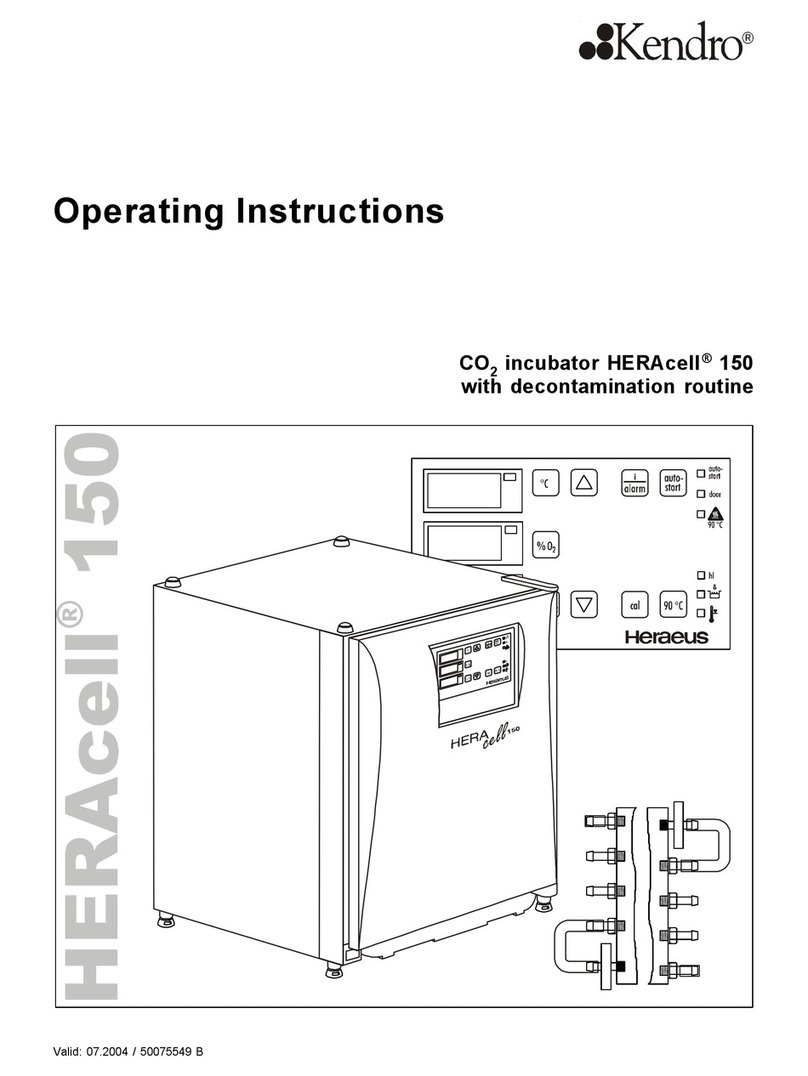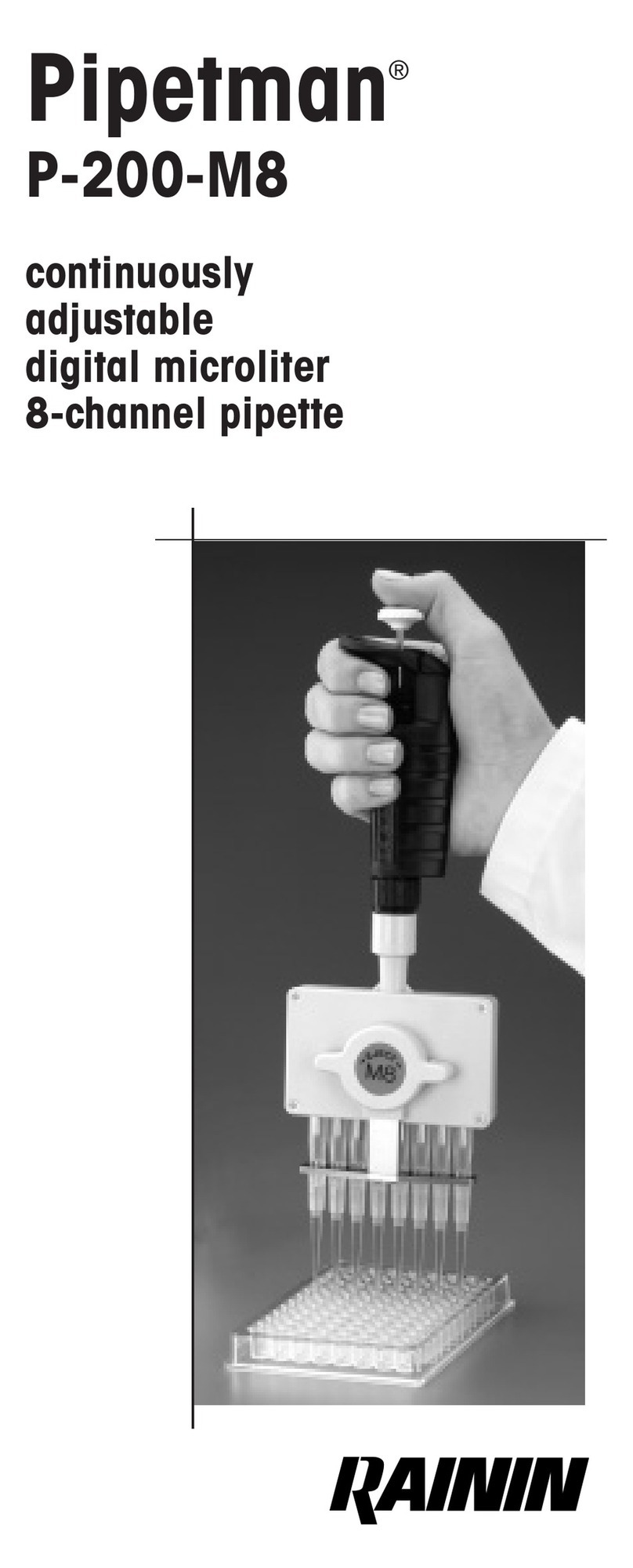Christ ALPHA 2-4 LDplus User manual

Translation of the original operating manual
sb
Freeze-dryer
Rev. 2.2 of 17/10/2016
Alpha 1-4 LDplus;Freeze-dryer;Alpha 2-4 LDplus; ;
Version 11/2006
Alpha 1-4 LDplus
Part no. 101541
Alpha 2-4 LDplus
Part no. 101542
Freeze-dryer
Operating Manual
Please retain for later use!

Freeze-dryer Alpha 1-4 LDplus
Freeze-dryer Alpha 2-4 LDplus
2 / 102
Version 11/2006, Rev. 2.2 of 17/10/2016 • sb
Translation of the original operating manual

Freeze-dryer Alpha 1-4 LDplus
Freeze-dryer Alpha 2-4 LDplus
Version 11/2006, Rev. 2.2 of 17/10/2016 • sb
3 / 102
Translation of the original operating manual
In case of inquiries, please state the following numbers:
Order number:
Serial number:
© Copyright by
Martin Christ Gefriertrocknungsanlagen GmbH
An der Unteren Söse 50
37520 Osterode am Harz
Germany
Tel.: +49 (0) 5522 / 5007-0
Fax: +49 (0) 5522 / 5007-12
Web: www.martinchrist.de
E-mail: info@martinchrist.de

Freeze-dryer Alpha 1-4 LDplus
Freeze-dryer Alpha 2-4 LDplus
4 / 102
Version 11/2006, Rev. 2.2 of 17/10/2016 • sb
Translation of the original operating manual

Freeze-dryer Alpha 1-4 LDplus
Freeze-dryer Alpha 2-4 LDplus
Table of contents
Version 11/2006, Rev. 2.2 of 17/10/2016 • sb
5 / 102
Translation of the original operating manual
1General information.............................................................................................................9
1.1 Importance of the operating manual..................................................................................9
1.2 Intended use.....................................................................................................................9
1.3 Warranty and liability.......................................................................................................10
1.4 Copyright........................................................................................................................10
1.5 Explanation of symbols...................................................................................................10
1.6 Standards and regulations..............................................................................................10
1.7 Scope of supply..............................................................................................................10
2Layout and mode of operation.......................................................................................... 11
2.1 Layout of the freeze-dryer...............................................................................................11
2.1.1 Functional and operating elements............................................................................11
2.1.2 Name plate................................................................................................................13
2.2 Mode of operation...........................................................................................................14
2.2.1 General information on freeze-drying.........................................................................14
2.2.2 Freeze-drying process...............................................................................................17
2.2.2.1 Preparation........................................................................................................17
2.2.2.2 Freezing.............................................................................................................17
2.2.2.3 Main drying........................................................................................................18
2.2.2.4 Final drying........................................................................................................19
2.2.2.5 End of drying and aeration.................................................................................19
2.2.2.6 Defrosting ..........................................................................................................20
3Safety..................................................................................................................................21
3.1 Marking of the unit..........................................................................................................21
3.2 Explanation of the symbols and notes.............................................................................22
3.3 Responsibility of the operator..........................................................................................23
3.4 Operating personnel .......................................................................................................23
3.5 Informal safety instructions .............................................................................................24
3.6 Safety instructions ..........................................................................................................24
3.6.1 Electrical safety .........................................................................................................25
3.6.2 Mechanical safety......................................................................................................25
3.6.3 Fire prevention...........................................................................................................26
3.6.4 Thermal safety...........................................................................................................26
3.6.5 Chemical and biological safety ..................................................................................26
3.7 Safety devices ................................................................................................................27
3.7.1 System check............................................................................................................27
3.7.2 Earth conductor check...............................................................................................27
3.8 Procedures in the event of hazards and accidents..........................................................27
3.9 Remaining hazards.........................................................................................................28

Freeze-dryer Alpha 1-4 LDplus
Freeze-dryer Alpha 2-4 LDplus
Table of contents
6 / 102
Version 11/2006, Rev. 2.2 of 17/10/2016 • sb
Translation of the original operating manual
4Storage and transport ....................................................................................................... 29
4.1 Dimensions and weight...................................................................................................29
4.2 Storage conditions..........................................................................................................29
4.3 Notes on transport..........................................................................................................30
4.4 Packaging.......................................................................................................................31
4.5 Transport safety device...................................................................................................31
5Set-up and connection ...................................................................................................... 32
5.1 Installation site................................................................................................................32
5.2 Power supply..................................................................................................................33
5.2.1 Connection ................................................................................................................33
5.2.2 Customer-provided fuses...........................................................................................33
5.3 Aeration and media drain valve.......................................................................................33
5.4 Vacuum sensor...............................................................................................................34
5.5 Vacuum pump.................................................................................................................36
5.6 Pressure control valve ....................................................................................................37
5.7 Rubber valves.................................................................................................................38
6Operation............................................................................................................................ 39
6.1 Initial start-up..................................................................................................................39
6.2 Installation of accessories...............................................................................................39
6.3 Preparation.....................................................................................................................39
6.4 Switching the freeze-dryer on .........................................................................................39
6.5 LDplus control system.....................................................................................................40
6.5.1 User interface............................................................................................................40
6.5.2 Mode .........................................................................................................................43
6.5.3 Main menu.................................................................................................................45
6.5.3.1 Changing set values ..........................................................................................45
6.5.3.2 Special functions................................................................................................47
6.5.3.3 Process and equipment information...................................................................48
6.5.3.4 Options..............................................................................................................49
6.5.3.5 Tutorial...............................................................................................................51
6.6 Switching the freeze-dryer OFF......................................................................................52
7Malfunctions and error correction....................................................................................53
7.1 General malfunctions......................................................................................................53
7.1.1 Power failure..............................................................................................................53
7.1.2 Insufficient vacuum....................................................................................................53
7.1.2.1 Small flange connections...................................................................................53
7.1.2.2 Aeration and media drain valve..........................................................................54
7.1.2.3 Pressure control valve........................................................................................55
7.1.2.4 Rubber valves....................................................................................................55
7.1.2.5 Vacuum sensor..................................................................................................55
7.1.3 Insufficient ice condenser temperature ......................................................................55
7.2 Process and equipment messages.................................................................................56
7.3 Service contact...............................................................................................................58

Freeze-dryer Alpha 1-4 LDplus
Freeze-dryer Alpha 2-4 LDplus
Table of contents
Version 11/2006, Rev. 2.2 of 17/10/2016 • sb
7 / 102
Translation of the original operating manual
8Maintenance and service................................................................................................... 59
8.1 Maintenance...................................................................................................................59
8.1.1 General......................................................................................................................59
8.1.1.1 Ice condenser chamber......................................................................................60
8.1.1.2 Aeration valve, media drain valve ......................................................................60
8.1.1.3 Heat exchanger (only for air-cooled freeze-dryers) ............................................61
8.1.2 Vacuum pump ...........................................................................................................61
8.1.3 Exhaust filter (oil mist separator)................................................................................62
8.1.4 Vacuum sensor..........................................................................................................62
8.1.5 Accessories...............................................................................................................62
8.2 Disinfection of the drying chamber and accessories .......................................................63
8.3 Service ...........................................................................................................................64
8.4 Return of defective parts.................................................................................................64
9Disposal.............................................................................................................................. 66
9.1 Disposal of the freeze-dryer............................................................................................66
9.2 Disposal of the packaging...............................................................................................66
10 Technical data.................................................................................................................... 67
10.1 Ambient conditions .........................................................................................................69
10.2 Technical documentation................................................................................................69
11 Appendix ............................................................................................................................ 70
11.1 Brief operating instructions .............................................................................................70
11.2 EC declaration of conformity in accordance with the EC Machinery Directive.................75
11.3 Declaration of conformity –China RoHS 2......................................................................77
11.4 Resistance to stress cracking and chemical influences "Plexiglas".................................79
12 Glossary.............................................................................................................................97
13 Index................................................................................................................................... 99

Freeze-dryer Alpha 1-4 LDplus
Freeze-dryer Alpha 2-4 LDplus
Table of contents
8 / 102
Version 11/2006, Rev. 2.2 of 17/10/2016 • sb
Translation of the original operating manual

Freeze-dryer Alpha 1-4 LDplus
Freeze-dryer Alpha 2-4 LDplus
1 General information
Version 11/2006, Rev. 2.2 of 17/10/2016 • sb
9 / 102
Translation of the original operating manual
Pos: 1/ 200C hrist/360 GT- BA Labor-Pilot ( STANDARDMODULE) /010 Allgemeine Infor mationen/010 Allg emeine Informatio nen========= ======== ============== = @24\m od_140498320 7982_68.docx @ 1829 21@ 1 @ 1
1 General information
Pos: 2/ 200C hrist/360 GT-BA Labor-Pil ot( STANDARDMODU LE)/010 Allgemeine Infor mationen/010-0010 Stell enwert der Betriebsanleitung @ 25\ mod_1404983209 248_68.docx @ 182935 @ 2 @ 1
1.1 Importance of the operating manual
A fundamental requirement for the safe and trouble-free operation of the
unit is to be familiar with the fundamental safety instructions and all
possible hazards.
The operating manual includes important information concerning the safe
operation of the freeze-dryer.
This operating manual, and in particular the notes on safety and hazards,
must be observed by all persons operating the unit.
In addition, the local rules and regulations for the prevention of accidents
must be complied with.
Pos: 3/ 010U niversalmodul e/ Leerzeile @ 0\ mod_120211624450 0_0.docx @ 114 @ @ 1
Pos: 4/ 200C hrist/360 GT- BA Labor-Pilot ( STANDARDMODULE) /010 Allgemeine Infor mationen/010- 0020 Bestimmungsg emäße Verwend ung Labor @ 25\mod_ 1404983210350_ 68.docx @ 182949 @ 2 @ 1
1.2 Intended use
CHRIST freeze-dryers have been solely designed for the freeze-drying of
solid or liquid products in ampoules, vials or dishes. They are, therefore,
solely intended for these applications.
The freeze-dryer is suitable
•for freeze-drying materials such as bacteria and virus cultures, blood
plasma, serum fractions, antibodies, sera, vaccines, and
pharmaceutical products
•for freeze-drying plant extracts, e.g. for biochemical tests
•for freeze-drying inorganic materials, e.g. nanoparticles
•for freeze-drying numerous other products (for further information
please contact our qualified personnel)
Any other use beyond this area of application is regarded as improper use.
Martin Christ Gefriertrocknungsanlagen GmbH cannot be held liable for any
damage resulting from such improper use.
The intended use also includes:
•observation of all the notes and instructions included in the operating
manual
•compliance with the inspection and maintenance instruction
•prohibition of any type of extensions to, or conversions of the unit.
Pos: 5/ 010U niversalmodul e/Seitenwechsel @ 0\mod_1 202116244312_0.d ocx@ 10 5@ @ 1

Freeze-dryer Alpha 1-4 LDplus
Freeze-dryer Alpha 2-4 LDplus
1 General information
10 / 102
Version 11/2006, Rev. 2.2 of 17/10/2016 • sb
Translation of the original operating manual
Pos: 6/ 200C hrist/360 GT- BA Labor-Pilot ( STANDARDMODULE) /010 Allgemeine Infor mationen/010- 0030 Gewährleistu ng undH aftung @ 25\m od_14049832113 77_68.docx @ 182963 @ 2@ 1
1.3 Warranty and liability
The warranty and liability are subject to our "General Terms and
Conditions" that were distributed to the operator upon the conclusion of the
contract.
Warranty and liability claims are excluded if they are due to one or several
of the following reasons:
•improper use
•non-compliance with the safety instructions and hazard warnings in the
operating manual
•improper installation, start-up, operation, and maintenance of the
freeze-dryer.
Pos: 7/ 010U niversalmodul e/ Leerzeil e@ 0\ mod_120211624450 0_0.docx @ 114 @ @ 1
Pos: 8/ 200C hrist/360 GT- BA Labor-Pilot ( STANDARDMODULE) /010 Allgemeine Infor mationen/010- 0040 Urheberrecht @ 2 5\mod_1404983 212403_68.doc x@ 182977 @ 2 @ 1
1.4 Copyright The copyright concerning the operating manual remains with Martin Christ
Gefriertrocknungsanlagen GmbH.
The operating manual is solely intended for the operator and their
personnel. It includes instructions and information that may not be
•duplicated,
•distributed, or
•communicated in any other way neither in full nor in parts.
Non-compliance may be prosecuted under criminal law.
Pos: 9/ 010U niversalmodul e/ Leerzeil e@ 0\ mod_120211624450 0_0.docx @ 114 @ @ 1
Pos: 10 /200 Christ/360 GT- BA Labor-Pilot (ST ANDARDMODU LE)/010 Allgemein eInf ormationen/010- 0050 Z eichener klärung @ 25\mod_140 4983213429_68.doc x@ 182991 @ 2 @ 1
1.5 Explanation of symbols
In this operating manual, specialist terms that are explained in the glossary
(see chapter 12 - "Glossary") are marked by an arrow and printed in italics
(e.g. sublimation).
Pos: 11 /010U niversalmodule/ Leerzeile @ 0\mod_ 1202116244500_ 0.docx@ 1 14@ @ 1
Pos: 12 /200 Christ/360 GT- BA Labor-Pilot (ST ANDARDMODU LE)/010 Allgemein eInf ormationen/010- 0061 N ormen und Vorschrif ten( ohne Druc kgeräteRL) @ 40\mod_ 145017375124 5_68.docx @ 291724 @ 2 @ 1
1.6 Standards and regulations
EC declaration of conformity in accordance with the EC Machinery
Directive (see chapter 11.2 - "EC declaration of conformity in accordance
with the EC Machinery Directive")
Pos: 13 /010U niversalmodule/ Leerzeile @ 0\mod_ 1202116244500_ 0.docx@ 1 14@ @ 1
Pos: 14 /200 Christ/361 GT- BA Labor-Pilot (PR OJEKTE)/Alpha/ Alpha 1-4_2-4 LDpl us/010 Allgemeine Infor mationen/010- 0070 Lieferumfang Alp ha 1-4_2-4 LDplus @ 35 \mod_143 0379091331_68. docx@ 25 8534@ 2 @ 1
1.7 Scope of supply
The scope of supply comprises:
•1 tube of high-vacuum grease
•1 litre of vacuum pump oil (only if a pump is included)
•1 set of flange components and several small parts for service and
maintenance purposes
•1 drain hose 0.5 m (silicone 8 x 12 mm)
•1 operating manual
Accessories and commissioning
According to your order, our order confirmation, and our delivery note.
Pos: 15 /010U niversalmodule/A bschnittswechsel @ 0\ mod_12021245140 62_0.docx @ 418 @ @ 1

Freeze-dryer Alpha 1-4 LDplus
Freeze-dryer Alpha 2-4 LDplus
2 Layout and mode of operation
Version 11/2006, Rev. 2.2 of 17/10/2016 • sb
11 / 102
Translation of the original operating manual
Pos: 16 /010U niversalmodule/S eitenwechsel @ 0\mod_ 1202116244312_ 0.docx@ 1 05@ @ 1
Pos: 17 /200 Christ/360 GT- BA Labor-Pilot (ST ANDARDMODU LE)/020 Aufbau und Wir kungsweise/02 0 A ufbau und Wirkungsweis e======== =========== ======== @ 25\mod_1404 983235994_68. docx@ 183019 @ 1 @ 1
2 Layout and mode of operation
Pos: 18 /200 Christ/360 GT- BA Labor-Pilot (ST ANDARDMODU LE)/020 Aufbau und Wir kungsweise/02 0-0010 Aufbau der Gefri ertrocknungsanlage-------------------------------------------------@ 25\mod_1404 983236941_68.doc x@ 18303 3@ 2 @ 1
2.1 Layout of the freeze-dryer
Pos: 19 /200 Christ/361 GT- BA Labor-Pilot (PR OJEKTE)/Alpha/ Alpha 1-4_2-4 LDpl us/020 Aufbau und Wir kungsweise/020-0 010-0010 Fun ktions- und Bedienelement e Alpha 1-4_2-4 LDpl us @ 35\mod_143037 9173090_68.docx @ 2 58550 @ 3 @ 1
2.1.1 Functional and operating elements
1Ice condenser
chamber with an
internal ice condenser
2User interface (see
chapter 6.5.1 - "User
interface")
3Mains power switch
Fig. 1: Total view of the freeze-dryer
4Pipe connection of the
vacuum pump (behind
the cover plate)
5Ice condenser
Fig. 2: Ice condenser chamber

Freeze-dryer Alpha 1-4 LDplus
Freeze-dryer Alpha 2-4 LDplus
2 Layout and mode of operation
12 / 102
Version 11/2006, Rev. 2.2 of 17/10/2016 • sb
Translation of the original operating manual
6Equipotential bonding
screw
7Aeration and media
drain valve
Fig. 3: Left side of the freeze-dryer
8Vacuum connection
9Name plate (see
chapter 2.1.2 - "Name
plate")
10Heat exchanger of the
refrigeration unit
11Electrical connection of
the vacuum sensor
12Power supply of the
pressure control valve
13Power supply of the
vacuum pump
14Mains fuse
15Mains cable
Fig. 4: Rear view of the freeze-dryer
Pos: 20 /010U niversalmodule/S eitenwechsel @ 0\mod_ 1202116244312_ 0.docx@ 1 05@ @ 1

Freeze-dryer Alpha 1-4 LDplus
Freeze-dryer Alpha 2-4 LDplus
2 Layout and mode of operation
Version 11/2006, Rev. 2.2 of 17/10/2016 • sb
13 / 102
Translation of the original operating manual
Pos: 21 /200 Christ/361 GT- BA Labor-Pilot (PR OJEKTE)/Alpha/ Alpha 1-4_2-4 LDpl us/020 Aufbau und Wir kungsweise/020-0 010-0020 Typenschil d Alpha 1-4_2-4 LDplu s@ 3 5\mod_143037 9174381_68.doc x@ 258565 @ 3 @ 1
2.1.2 Name plate
1Serial number
2Type
3Refrigerant data of
the 1st stage
4Nominal voltage
5Year of manufacture
(month/year)
6Part number
7Refrigerant data of
the 2nd stage
8Rated current /
apparent power
Fig. 5: Example of a name plate (here: Alpha 2-4 LDplus)
Pos: 22 /010U niversalmodule/S eitenwechsel @ 0\mod_ 1202116244312_ 0.docx@ 1 05@ @ 1

Freeze-dryer Alpha 1-4 LDplus
Freeze-dryer Alpha 2-4 LDplus
2 Layout and mode of operation
14 / 102
Version 11/2006, Rev. 2.2 of 17/10/2016 • sb
Translation of the original operating manual
Pos: 23 /200 Christ/360 GT- BA Labor-Pilot (ST ANDARDMODU LE)/020 Aufbau und Wir kungsweise/02 0-0020 Wirkungs weise------------------------@ 25\mod_140 4983253850_ 68.docx @ 183047 @ 2 @1
2.2 Mode of operation
Pos: 24 /200 Christ/360 GT- BA Labor-Pilot (ST ANDARDMODU LE)/020 Aufbau und Wir kungsweise/02 0-0020-0010 Gefriertro cknung allgem ein@ 25\mod_14 04983254815_68.d ocx @ 183061 @ 3 @ 1
2.2.1 General information on freeze-drying
What is freeze-drying?
Freeze-drying or lyophilisation is a procedure for the gentle drying of high-
quality products. The product is dried by sublimation without passing
through the liquid phase.
What are typical applications for freeze-drying?
As far as their sheer quantity is concerned, foodstuffs are the major
application for freeze-drying. One widely known example is the production
of granulated instant coffee or the drying of fruit, e.g. for breakfast cereals.
Other areas of application are the restoration of water-damaged documents
or the drying of archaeological artefacts.
Another important area of application is the drying of biotechnological and
pharmaceutical products, e.g. tissues and tissue extracts, bacteria,
vaccines, and sera. Products that would not keep well when they are
dissolved in water can be preserved by freeze-drying. During this process,
the biological properties of these sensitive substances are preserved. The
compounds remain unchanged from a qualitative and quantitative point of
view. After the addition of water, the products will have the same
characteristics as the original products.
How does freeze-drying work?
Freeze-drying is a very gentle procedure for the extraction of water from a
product in the frozen state. The drying process takes place through
sublimation, i.e. the direct transition of a product from the solid phase to the
gas phase. This happens under vacuum.
The following section describes the process of sublimation based on the
example of water, since most products that are processed by freeze-drying
are aqueous solutions. Their behaviour is based on identical fundamental
principles.
The vapour pressure curve above ice describes the phase transition as a
function of the pressure and temperature. The higher the temperature is,
the higher the vapour pressure.
•If the vapour pressure is higher than 6.11 mbar (A), water passes
through all three phases: solid, liquid, and gas (see the illustration).
•If the vapour pressure is below 6.11 mbar (B) and energy is added, the
ice will be directly converted into water vapour once the sublimation
curve is reached. This transition is called “sublimation”. If thermal
energy is added to pure ice with a temperature of less than –30°C at a
pressure of 0.37 mbar, it will be converted into water vapour once it
reaches –30°C (see figure).
The vacuum prevents the melting of ice when energy is added. If thermal
energy is added to a frozen product under vacuum, thawing of the product
will be prevented and the water that is contained within the product will be
released in the form of water vapour.

Freeze-dryer Alpha 1-4 LDplus
Freeze-dryer Alpha 2-4 LDplus
2 Layout and mode of operation
Version 11/2006, Rev. 2.2 of 17/10/2016 • sb
15 / 102
Translation of the original operating manual
Fig. 6: Vapour pressure curve above ice
From a physical point of view, the freeze-drying process covers three
phases (see figure below):
(1) Freezing: The product to be dried is frozen under atmospheric pressure.
This can be done either directly in the freeze-dryer or in a separate deep-
freeze. The freezing temperature should be approximately 10°C below the
solidification point of the product.
(2) Evacuation: When the product is sufficiently frozen, the vacuum pump is
activated. The pressure inside the drying chamber will be lowered to the
value that corresponds to the freezing temperature in accordance with the
vapour pressure curve above ice.
(3) Sublimation: Thermal energy is added to the product, thus starting the
sublimation process. Due to the added energy, the water in the product is
converted into water vapour. Since the ice condenser is much colder than
the product that is to be dried, the vapour pressure in the ice condenser is
considerably lower than above the product. As a result, the water vapour
that is released by the product streams to the ice condenser, where it
condenses on the condenser coils.
Once the free water has been extracted from the product during the main
drying phase, the last traces of bound water will also be removed at a final
pressure that is as low as possible and at higher temperatures. This takes
place by way of desorption. This drying phase is also called final drying.
6.11 mbar
0.37 mbar
-30°C
B
A
Vapourpressurecurve
Vapourpressurecurveforice=
Sublimationpressurecurve
Melting
Sublimation Triple point
SOLID
LIQUID
GASEOUS
Evaporation
Meltingpoint
pressurecurve
Pressure
(mbar)
Temperature (°C)

Freeze-dryer Alpha 1-4 LDplus
Freeze-dryer Alpha 2-4 LDplus
2 Layout and mode of operation
16 / 102
Version 11/2006, Rev. 2.2 of 17/10/2016 • sb
Translation of the original operating manual
Fig. 7: Freeze-drying phases
NOTE
Please find further information about basic principles, optimum procedures
and applications in the brochure "Smart freeze-drying", which can be
downloaded at www.martinchrist.de [Applications].
Pos: 25 /010U niversalmodule/S eitenwechsel @ 0\mod_ 1202116244312_ 0.docx@ 1 05@ @ 1
1
2
1 bar
20°C
Vapourpressurecurve
Vapourpressurecurveforice=
sublimationpressurecurve
Triple point
SOLID
LIQUID
GASEOUS
Meltingpoint
pressurecurve
Pressure
(mbar)
Temperature (°C)

Freeze-dryer Alpha 1-4 LDplus
Freeze-dryer Alpha 2-4 LDplus
2 Layout and mode of operation
Version 11/2006, Rev. 2.2 of 17/10/2016 • sb
17 / 102
Translation of the original operating manual
Pos: 26 /200 Christ/360 GT- BA Labor-Pilot (ST ANDARDMODU LE)/020 Aufbau und Wir kungsweise/02 0-0020-0020 Ablauf eines Gefriertroc knungsprozesses @ 25\ mod_140498 3255939_68.docx @ 1 83075 @ 3 @ 1
2.2.2 Freeze-drying process
The main components of a freeze-dryer are:
•vacuum drying chamber with a temperature control system for adding
thermal energy
•vacuum pump for generating a vacuum inside the drying chamber
•ice condenser for binding the water vapour that is released by the
product.
Pos: 27 /010U niversalmodule/ Leerzeile @ 0\mod_ 1202116244500_ 0.docx@ 1 14@ @ 1
Pos: 28 /200 Christ/360 GT- BA Labor-Pilot (ST ANDARDMODU LE)/020 Aufbau und Wir kungsweise/02 0-0020-0020-001 0 V orbereitung @ 25\mod _1404983256926 _68.docx @ 18308 9@ 4 @ 1
2.2.2.1 PreparationThe ice condenser chamber must be clean and dry. Any water residues
from a preceding drying run must be removed.
The media drain valve and the aeration valve must be closed.
In the case of units that are equipped with a pressure control valve
(standard on LSCplus units), the vacuum pump should be warmed up
(“warm-up”) for at least 15 minutes prior to the start of the main drying
phase. Do not subject the vacuum pump to condensable gases until the
operating temperature is reached. In this way, the service life of the
vacuum pump can be extended.
At the same time, the ice condenser is pre-cooled ("cool-down"). The ice
condenser temperature does not have any influence on the product
temperature. The sole purpose of the ice condenser is to bind the released
water vapour.
Pos: 29 /010U niversalmodule/ Leerzeile @ 0\mod_ 1202116244500_ 0.docx@ 1 14@ @ 1
Pos: 30 /200 Christ/360 GT- BA Labor-Pilot (ST ANDARDMODU LE)/020 Aufbau und Wir kungsweise/02 0-0020-0020-002 0 G efrieren @ 25\mod_14 04983257955_6 8.docx @ 183103 @ 4 @ 1
2.2.2.2 Freezing First, the product that is to be dried is frozen. This can be carried out either
directly in the freeze-dryer or in a separate deep-freeze. Especially in the
case of small filling quantities, we recommend pre-cooling the shelves as
well in order to prevent the product from thawing during the evacuation.
Two very different structures of the frozen material can be distinguished:
•crystalline structures with clearly distinguishable crystals
•amorphous structures with no crystal junctions at all (e.g. glass)
The majority of the freeze-drying products have a crystalline form.
When freezing these kinds of products, one must take into consideration
that too deep and too quick freezing leads to smaller ice crystals, which has
a negative effect on the duration of the drying process.
For every product to be dried, the solidification point must be determined as
a first step. This is the point at which the water that is contained in the
product has completely crystallised. In order to ensure an optimum freeze-
drying process, the product temperature should be approximately 10°C
below the solidification point.
A layer thickness of the product of 1-2 cm should not be exceeded, since
otherwise the drying duration would be negatively affected. If liquids are to
be dried in bottles with a layer thickness of more than 1 cm, we recommend
freezing them in a cooling bath with the aid of a shell or spin freezing
device (see figure). Due to the centrifugal force, the liquid to be frozen will
rise on the inner wall of the bottle and freeze. This procedure reduces the
layer thickness and, thereby, the total drying time will be shortened to a
considerable extent (see figures on the right side).

Freeze-dryer Alpha 1-4 LDplus
Freeze-dryer Alpha 2-4 LDplus
2 Layout and mode of operation
18 / 102
Version 11/2006, Rev. 2.2 of 17/10/2016 • sb
Translation of the original operating manual
Fig. 8: Shell freezing
Fig. 9: Cooling bath with spin freezing device
Fig. 10: Spin freezing
NOTE
If the product that is to be dried contains solvents or high salt
concentrations, it may start to thaw during the drying process, which is
indicated by clearly visible foaming. In order to prevent this, the product
must be frozen as deeply as possible, e.g. with the aid of liquid nitrogen,
prior to putting it into the unit.
Pos: 31 /010U niversalmodule/ Leerzeile @ 0\mod_ 1202116244500_ 0.docx@ 1 14@ @ 1
Pos: 32 /010U niversalmodule/ Leerzeile @ 0\mod_ 1202116244500_ 0.docx@ 1 14@ @ 1
Pos: 33 /200 Christ/360 GT- BA Labor-Pilot (ST ANDARDMODU LE)/020 Aufbau und Wir kungsweise/02 0-0020-0020-003 0 Ha upttrocknung @ 25\ mod_14049832 59260_68.docx @ 183 117 @ 4@ 1
2.2.2.3 Main drying
When the product is frozen to a sufficiently deep extent, the main drying
phase commences. The vacuum pump is switched on. The pressure inside
the drying chamber will be lowered to the value that corresponds to the
freezing temperature in accordance with the vapour pressure curve above
ice. At the same time, thermal energy will be added to the product. In the
case of products in round-bottom flasks, wide-neck bottles, etc., this is
realised through the environment that is considerably warmer (direct
contact heat), in the case of unheated shelves by way of thermal radiation
from the environment, and in the case of temperature-controlled shelves
directly via the shelves. As a result, the sublimation process starts.
At the beginning of the drying process, the maximum drying rate will be
reached. The more the sublimation area recedes into the product, the
further the produced water vapour must pass through the layers that have
already been dried.
Under certain conditions, it is possible that the vacuum inside the ice
condenser chamber increases during the main drying phase (e.g. from 0.63
mbar to 0.47 mbar) although the valve towards the vacuum pump is closed.
From a physical point of view, this is due to the pumping effect of the ice
condenser ("cryo-pumping effect").
The required drying time depends strongly on the drying vacuum. At 1.0
mbar, one gram of ice takes up a volume of 1 m3of vapour, at 0.1 mbar a
volume of 10 m3of vapour, and at 0.001 mbar a volume of 100 m3. The
closer the vacuum is to the solidification point, the smaller is the resulting
vapour volume. The drying rate increases and the drying time decreases.
The end of the main drying phase is reached, when the product
temperature and the shelf temperature are nearly identical. The
temperature difference between the shelf and the product should be
approximately 3 K to 5 K.
Pos: 34 /010 Universal module/ L eerzeile @ 0\mod_ 1202116244500_ 0.docx @ 114 @ @ 1
Pos: 35 /200 Christ/360 GT- BA Labor-Pilot (ST ANDARDMODU LE)/020 Aufbau und Wir kungsweise/02 0-0020-0020-004 0 Nac htrocknung @ 25\m od_14049832603 10_68.docx @ 183131 @ 4 @ 1

Freeze-dryer Alpha 1-4 LDplus
Freeze-dryer Alpha 2-4 LDplus
2 Layout and mode of operation
Version 11/2006, Rev. 2.2 of 17/10/2016 • sb
19 / 102
Translation of the original operating manual
2.2.2.4 Final drying
Final drying is an option whenever one requires a product with minimal
residual moisture. In the physical sense, this process is a desorption
process, i.e. the removal of adsorptively bound water. Final drying is
performed under the lowest possible final pressure that depends on the ice
condenser temperature in accordance with the vapour pressure curve
above ice as well as on the final vacuum of the vacuum pump that is used.
The process is supported by a higher shelf temperature.
Pos: 36 /010U niversalmodule/ Leerzeile @ 0\mod_ 1202116244500_ 0.docx@ 1 14@ @ 1
Pos: 37 /200 Christ/360 GT- BA Labor-Pilot (ST ANDARDMODU LE)/020 Aufbau und Wir kungsweise/02 0-0020-0020-005 0 Tr ocknungsende und Bel üftung @ 25\mod_14 04983261476_6 8.docx @ 183145 @ 4 @ 1
2.2.2.5 End of drying and aeration
The end of the drying process is reached when both the product and shelf
temperature are clearly in the positive range (+15 to +20°C) and if their
difference is not greater than 5 K.
Another indication of the end of the drying process is the behaviour of the
vacuum and of the ice condenser temperature. The ice condenser is no
longer subject to load and reaches the final temperature of approximately -
55°C or -85°C. The pressure in the drying chamber decreases in
accordance with the ice condenser temperature.
The vacuum pump will be switched off and the drying chamber will be
aerated via a rubber valve or via the aeration valve. The aeration valve can
also be used to flood the unit with nitrogen or another inert gas instead of
ambient air.
Then, the product can be removed from the unit.
Pos: 38 /010U niversalmodule/S eitenwechsel @ 0\mod_ 1202116244312_ 0.docx@ 1 05@ @ 1

Freeze-dryer Alpha 1-4 LDplus
Freeze-dryer Alpha 2-4 LDplus
2 Layout and mode of operation
20 / 102
Version 11/2006, Rev. 2.2 of 17/10/2016 • sb
Translation of the original operating manual
Pos: 39 /200 Christ/360 GT- BA Labor-Pilot (ST ANDARDMODU LE)/020 Aufbau und Wir kungsweise/02 0-0020-0020-006 0 A btauen Raumtemper atur @ 25\mod_1404 983262567_68.d ocx @ 183159 @ 4 @ 1
2.2.2.6 Defrosting Defrosting of the ice condenser is carried out at room temperature or with
warm water.
•At a maximum, the ice condenser chamber may be half filled with water.
•Ensure that no water gets into the pipe connection of the vacuum pump
and the vacuum sensor (behind the cover plate, see figure)
1Cover plate
Fig. 11: Eis condenser chamber
•Drain the condensate through the media drain valve at the left side of
the freeze-dryer by attaching a hose on the nozzle (included in the
scope of supply) and placing a vessel underneath.
In order to avoid damage, the condensate must be removed directly after
the completion of the defrosting process. Then, any residual water must be
removed from the ice condenser chamber by way of a cloth.
Pos: 40 /010U niversalmodule/A bschnittswechsel @ 0\ mod_12021245140 62_0.docx @ 418 @ @ 1
Pos: 41 /010U niversalmodule/S eitenwechsel @ 0\mod_ 1202116244312_ 0.docx@ 1 05@ @ 1
This manual suits for next models
3
Table of contents
Other Christ Laboratory Equipment manuals

Christ
Christ Epsilon 2-10D LSCplus User manual
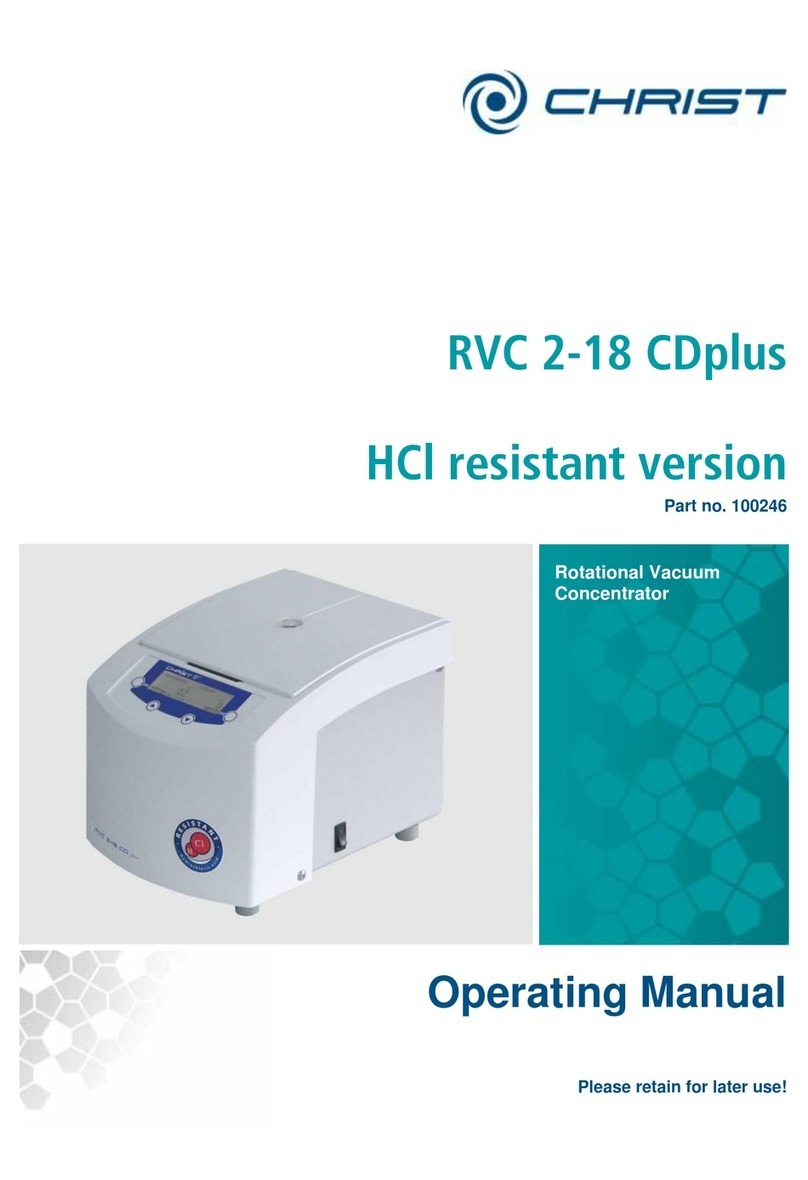
Christ
Christ RVC 2-18 CDplus User manual
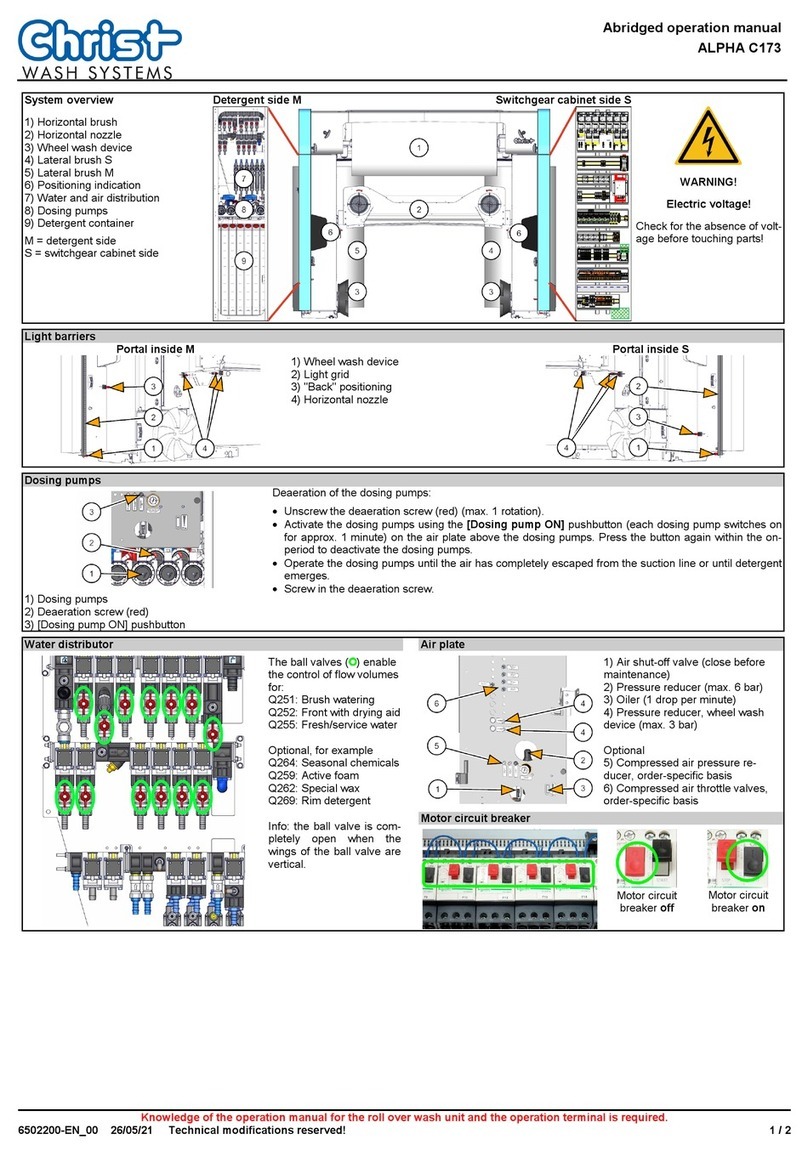
Christ
Christ ALPHA C173 User manual
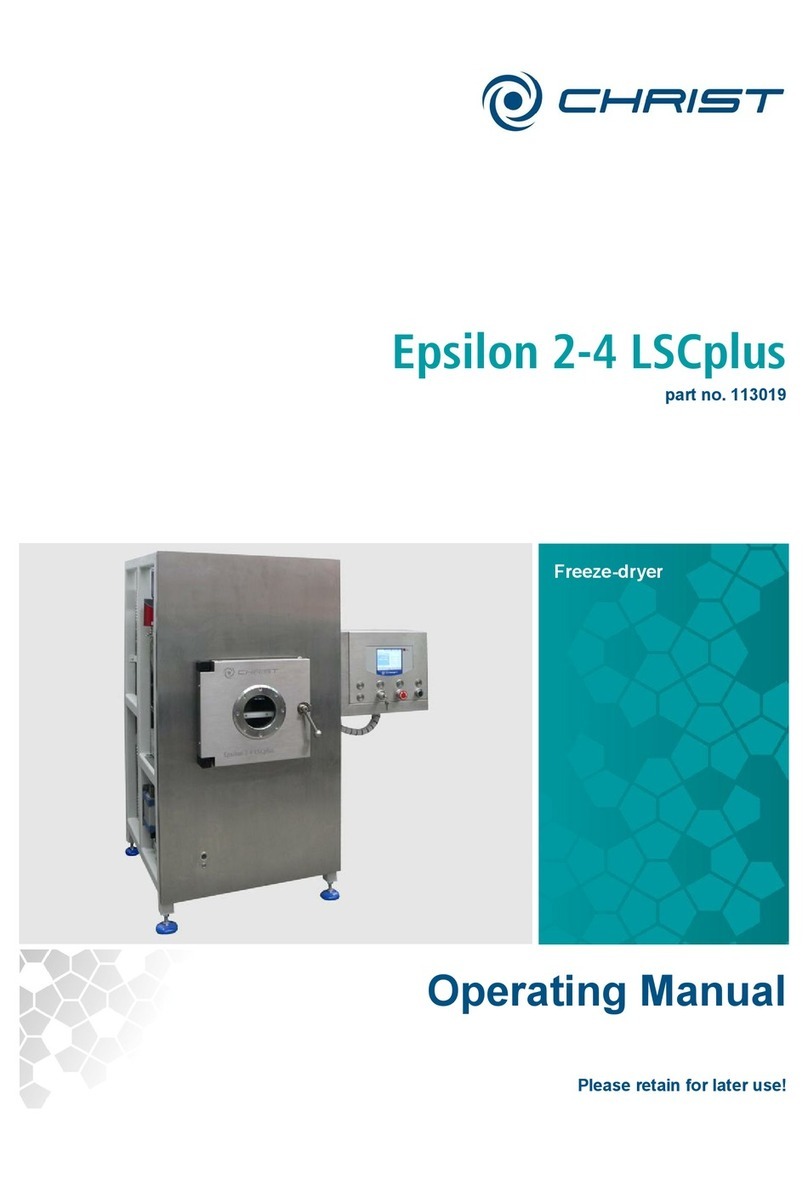
Christ
Christ Epsilon 2-4 LSCplus User manual
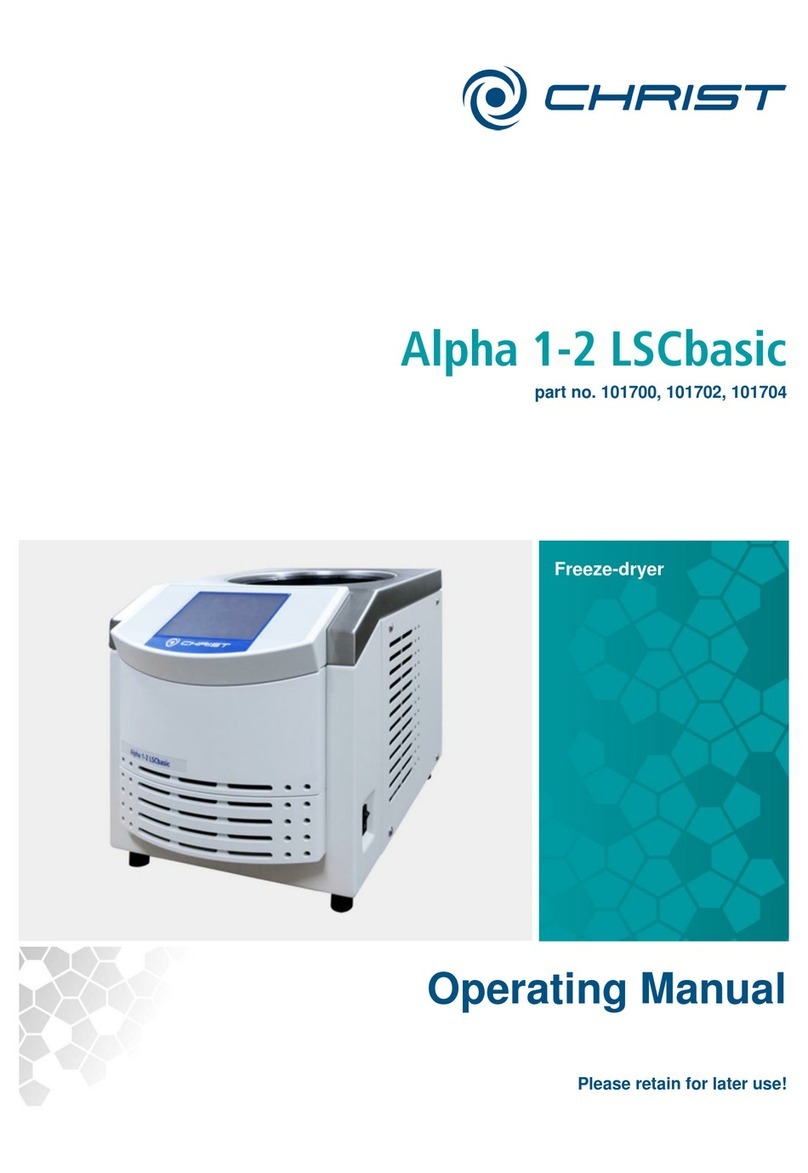
Christ
Christ Alpha 1 LSCbasic User manual
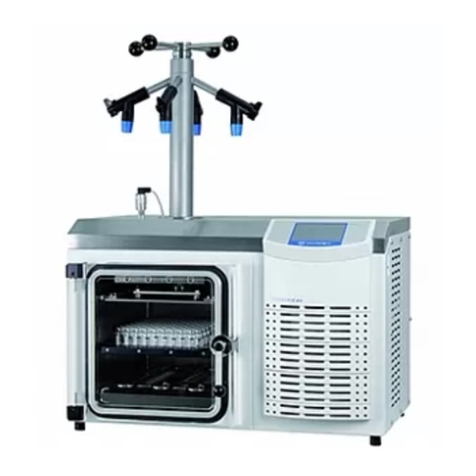
Christ
Christ Epsilon 1-4 LSCplus User manual
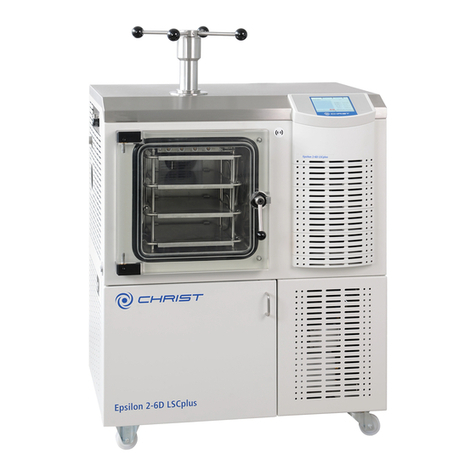
Christ
Christ Epsilon 2-6D LSCplus User manual
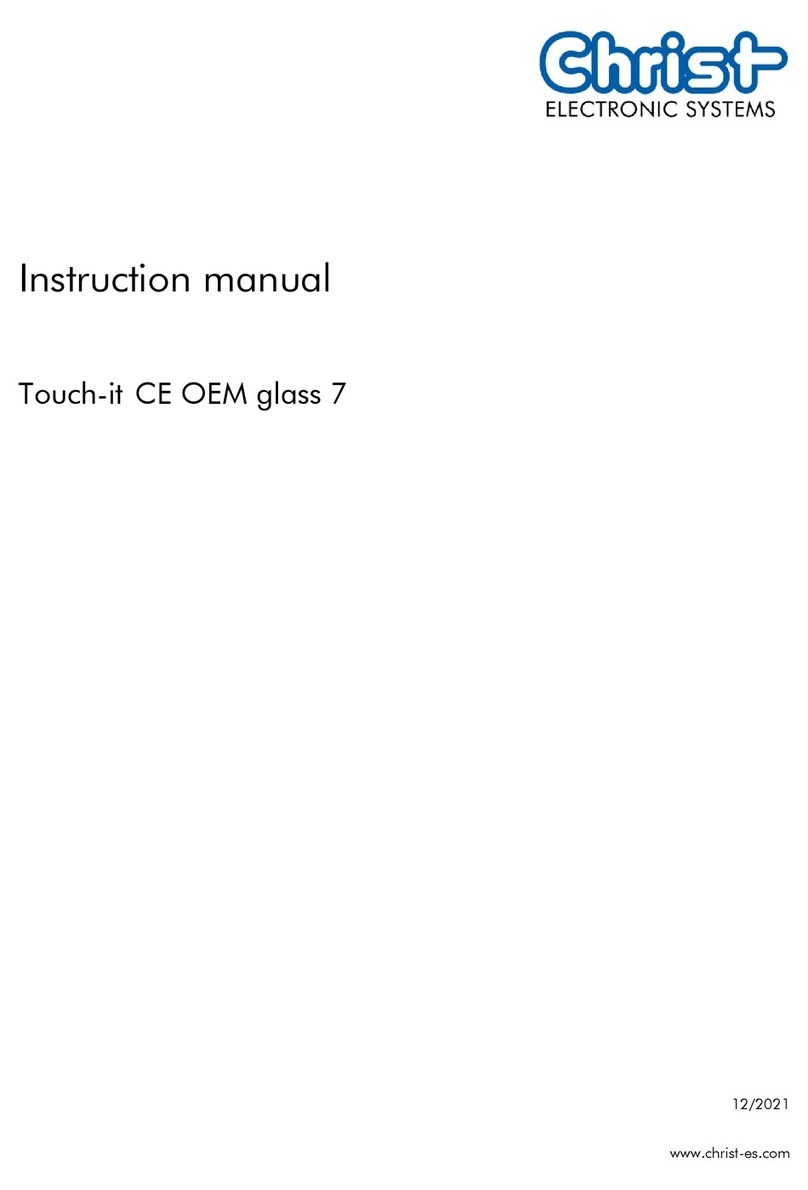
Christ
Christ Touch-itsCE OEM glass 7 User manual
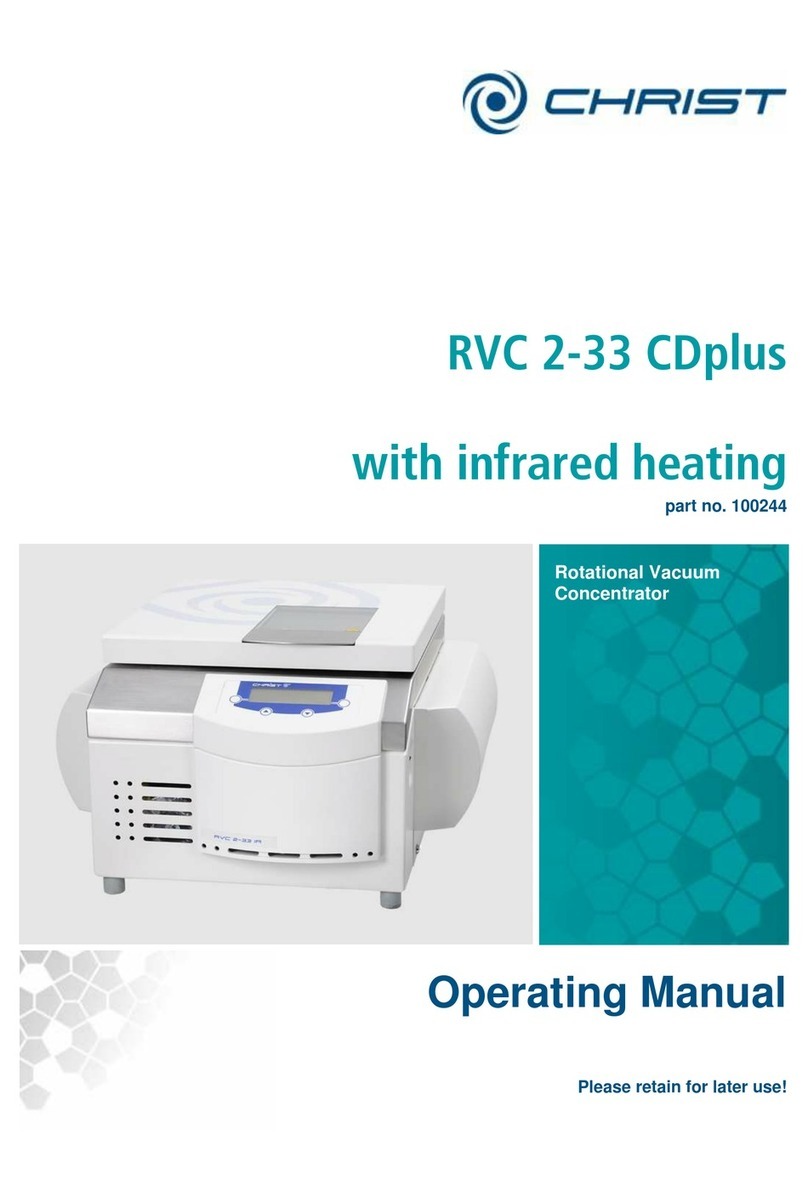
Christ
Christ RVC 2-33 CDplus User manual

Christ
Christ Epsilon 1-4 LSCplus User manual

